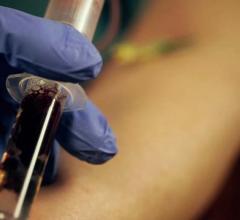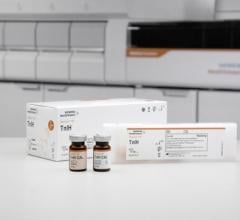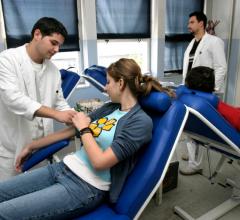April 17, 2014 — Data presented from two meta-analyses using the Atherotech Vertical Auto Profile (VAP) lipid panel showed the impact high-density lipoprotein (HDL) cholesterol and remnant lipoprotein (RLP) cholesterol have on determining a patient’s risk for hard coronary heart disease (CHD) endpoints, such as myocardial infarction or coronary death. Each analysis examined men and women without prevalent CHD enrolled in both the Framingham Offspring and Jackson Heart studies over eight years. In both studies, HDL, the “good” cholesterol in the body and RLP, similar to the “bad” cholesterol in the body (low-density lipoprotein, or LDL) — levels were measured by the VAP lipid panel, the most accurate and comprehensive lipid profile available to assess cardiometabolic risk. While previous study findings have shown the link between HDL and CHD, results from the meta-analyses determined that HDL subfractions, specifically HDL3, were much more predictive in assessing and reducing a patient’s risk for CHD, while RLP cholesterol was associated with increasing a patient’s risk. Data from both studies were presented via poster at the 2014 Annual Meeting of the American College of Cardiology (ACC) in Washington, D.C.
“With a significant relationship between HDL, RLP and hard CHD events, these findings are a critical step forward in helping physicians develop a better understanding of the relationship between lipoproteins and cardiovascular risk,” said Steven R. Jones, investigator and director of inpatient cardiology at Johns Hopkins Hospital as well as faculty of the Johns Hopkins Ciccarone Center for the Prevention of Heart Disease in Baltimore.
The first meta-analysis examined HDL cholesterol subfractions, specifically HDL2 (cholesterol removal) and HDL3(cholesterol distribution), and the risk for CHD. HDL2 is responsible for removing cholesterol from the bloodstream while HDL3 is responsible for the distribution of cholesterol. In previous studies throughout the world, HDL cholesterol has been negatively correlated with risk for CHD; however, the relationship between HDL subfractions and CHD is much more controversial. Findings from the clinical study revealed a significant correlation between HDL cholesterol as well as HDL3 cholesterol risk for incident hard CHD events. For each tertile increase in HDL cholesterol and HDL3cholesterol, there was a 25 percent and 28 percent reduction in risk for hard CHD, respectively. Despite this connection, HDL2 cholesterol did not achieve statistically significant results related to reducing risk of CHD.
The second meta-analysis reviewed RLP on hard CHD events. Remnants are precursors to LDL and can be elevated if there is impaired triglyceride lipid breakdown as observed in patients with metabolic syndrome and diabetes. Results showed that LDL cholesterol and non-HDL cholesterol demonstrated significant relationships with hard CHD risk. In addition, intermediate-density lipoprotein (IDL), which enables fat and cholesterol to move within the bloodstream, and RLP cholesterol were also highly correlated with increasing risk for hard CHD. For each tertile rise in IDL cholesterol and RLP cholesterol, there was a 41 percent and 37 percent increase in risk for hard CHD, respectively.
Atherotech also presented additional data from The Jackson Heart study via poster on March 29, 2014.
For more information: www.Atherotech.com


 October 09, 2019
October 09, 2019 








